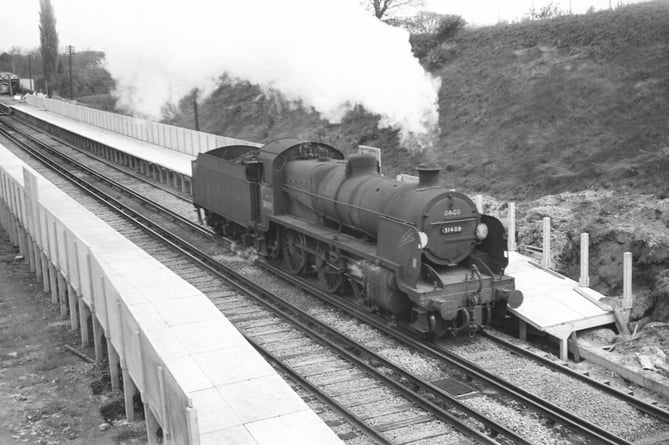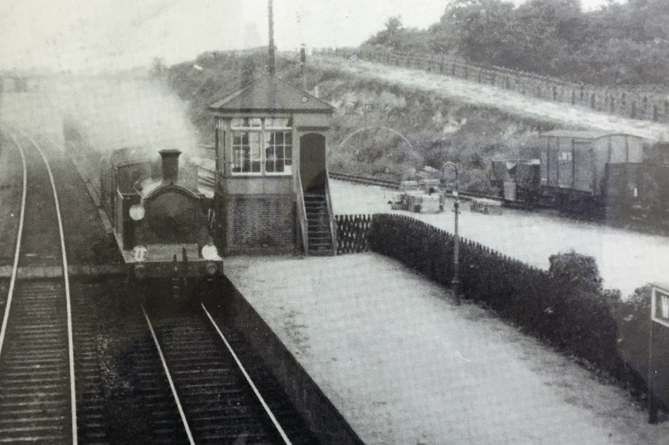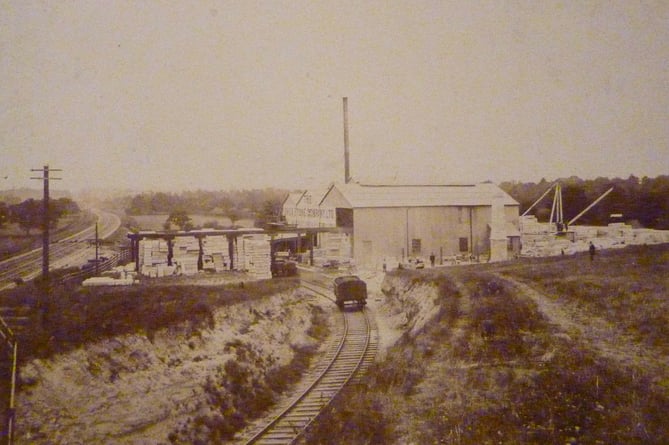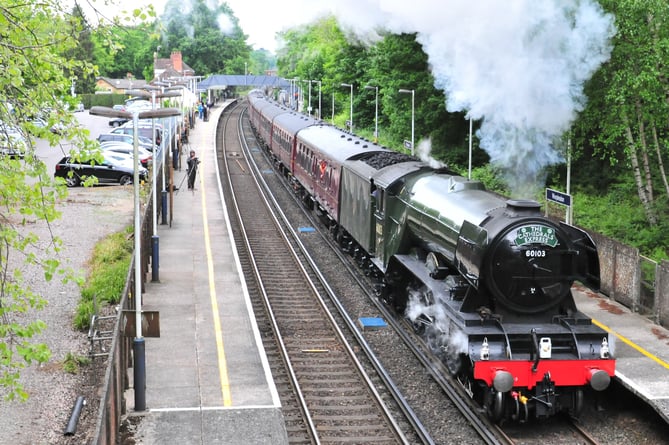Although it is named Worplesdon railway station, it’s not within that parish’s boundary. It is, of course, in the neighbouring parish of Mayford.
The London & Southampton Railway Company built and opened a line from Nine Elms in London to Woking in 1838, the station being called Woking Common, as there wasn’t much development on the heathland at that time. The company later became the London & South Western Railway, which soon expanded its lines.
In 1845 a line was opened from Woking to Guildford, then to Godalming and finally to Portsmouth in 1859, making it an important main line, which has been known for many years as the Portsmouth Direct Line.
However, Worplesdon railway station was not opened until March 1, 1883. This was despite failed petitions to the railway company to open a station even nearer to Woking itself, as by then the town was expanding.
When opened, Worplesdon station stood in the midst of the thinly populated Prey Heath. However, this area would soon see development in and around Mayford and at Pyle Hill, and to an extent within Worplesdon too. Therefore it became a convenient station for those living “in the country” and commuting to and from London for work.

The station was initially served by 10 trains a day to London and 10 trains from London per day. These were slow trains that took over an hour to reach their destination. There were four down trains and four up trains on Sundays.
Worplesdon station once had its own signal box and sidings for goods traffic. Local garden nurserymen once sent their produce there to be transported to the London markets. Worplesdon is not known for having much in the way of industry, but there was a firm close by whose product was tipped to revolutionise the construction of buildings.
The Owen Stone Company was close to Worplesdon station and began producing artificial stone there in 1897. The product it made utilised fine sand found in the area, mixed with lime. The works covered some size and a siding ran into it from the adjacent railway line.

The stone was produced by heating the sand to a high temperature in a revolving cylinder, then transferring it to hoppers in which the lime was added and mixed and then inserted into steel moulds within further large cylinders. Hot water was pumped in and steam pressure was applied for 33 hours. The water was then withdrawn while steam pressure continued until the stone was dry and after cooling it was ready to be cut into blocks.
The product appeared to be a winner as, evidently, it not only looked good, but for stonemasons, it was easy to carve. It’s believed a catalogue issued by the company featured the balustraded porch of a hotel in Woking.
However, the test of time would prove to be the best test - and that wasn’t long coming. Within a few years, the artificial stone was already crumbling and the business closed in 1908.
For many years it was the sixth successive station whose name started with the letter W. These were: Walton, Weybridge, West Weybridge, West Byfleet, Woking and Worplesdon. In 1962 West Weybridge was renamed Byfleet and New Haw.

The Portsmouth Direct Line was electrified in 1937 and in the 1960s the two platforms at the southern end of Worplesdon station were extended.
Today Worplesdon station is served by South Western Railway trains. In September 2016 the station was used to film scenes for The Commuter, a Hollywood thriller starring Liam Neeson and Elizabeth McGovern.
The film was actually set in New York City and for the filming at Worplesdon station it became, for one day only, Tarrytown. It was dressed up to look like an American station and was even covered in fake snow! Filming also took place at Pinewood Studios in Buckinghamshire and in New York City.
By David Rose

